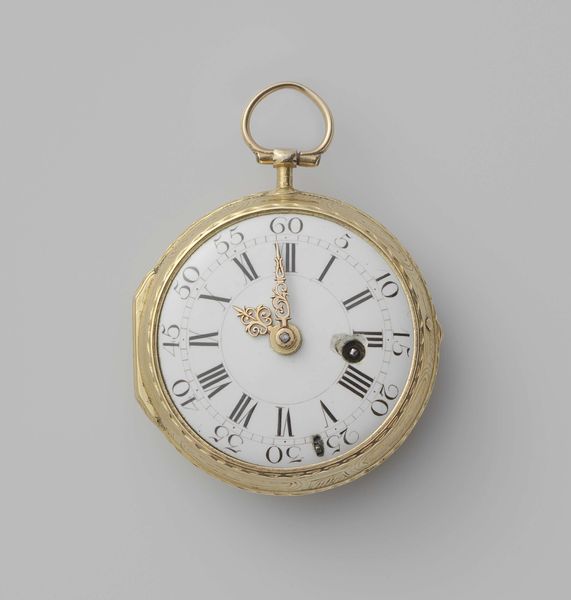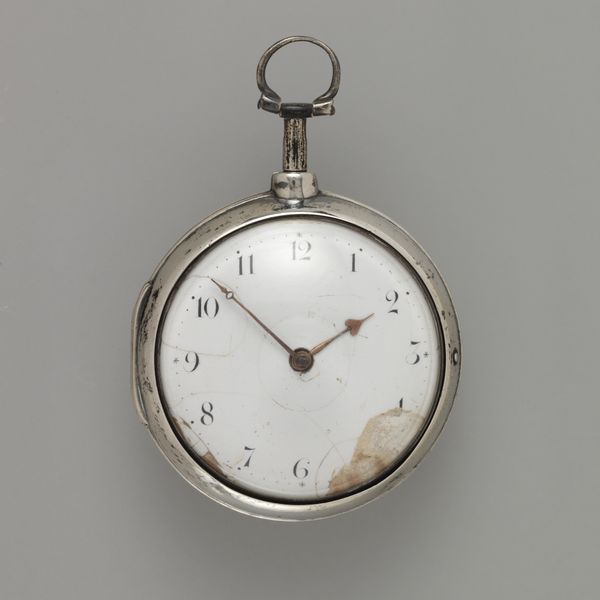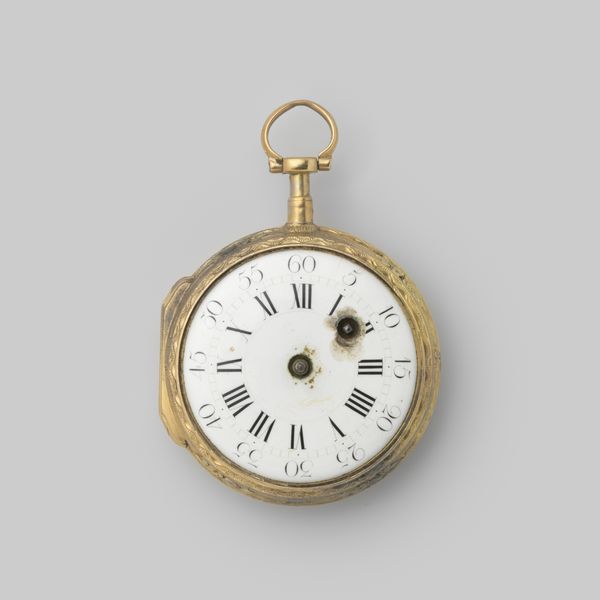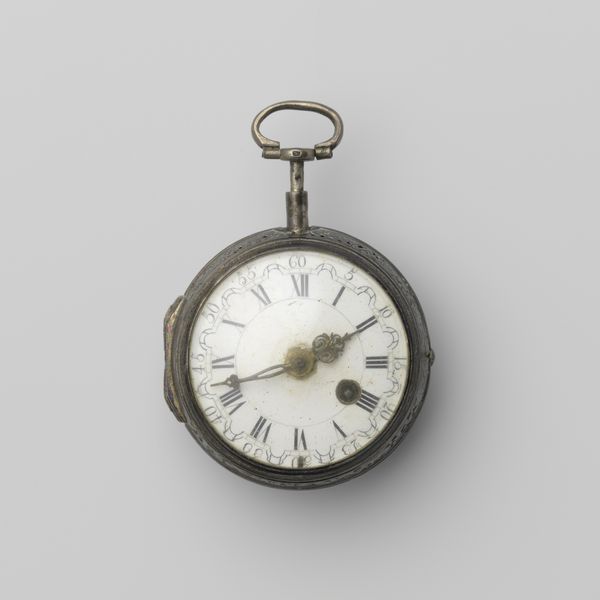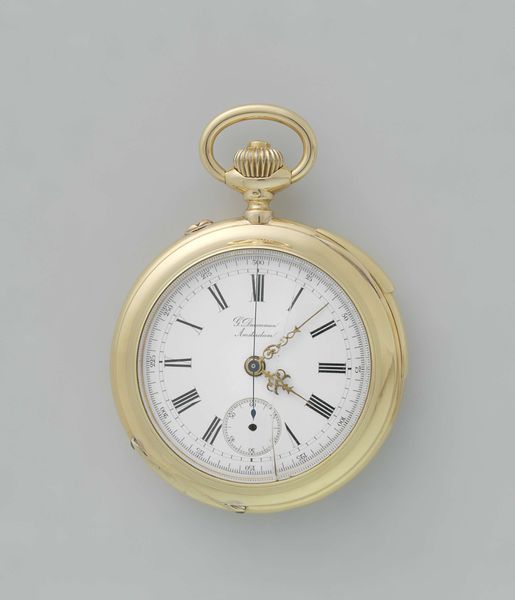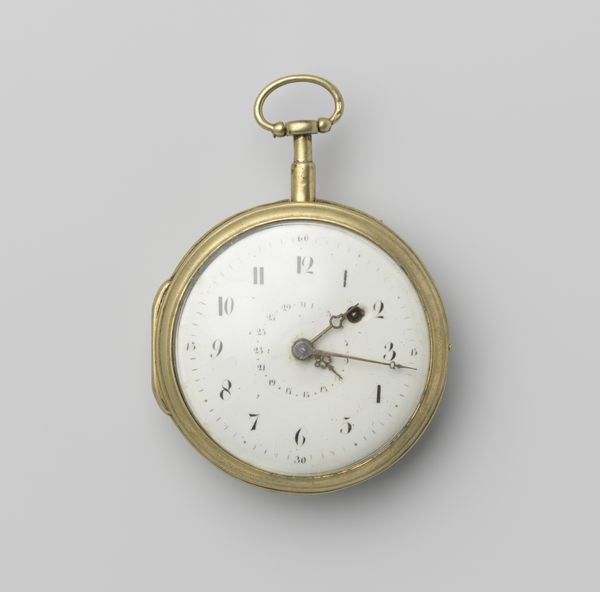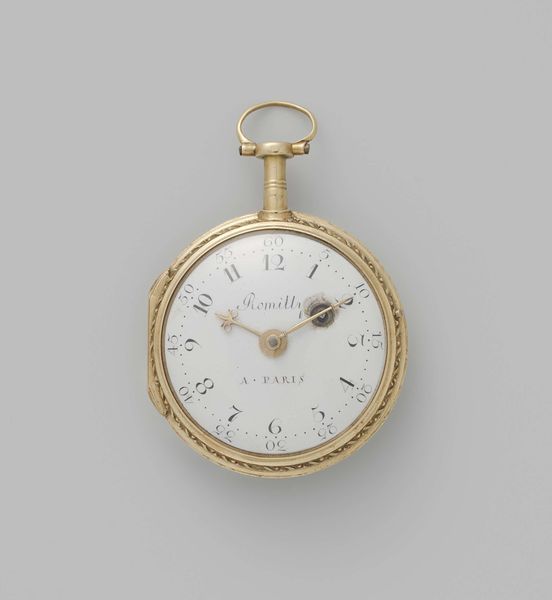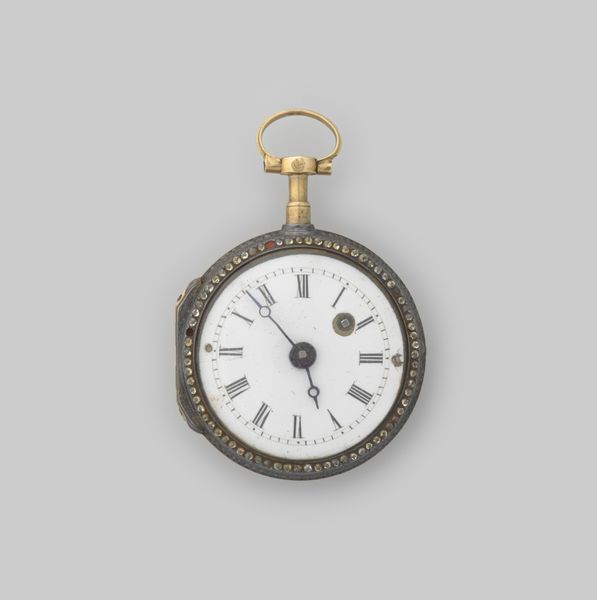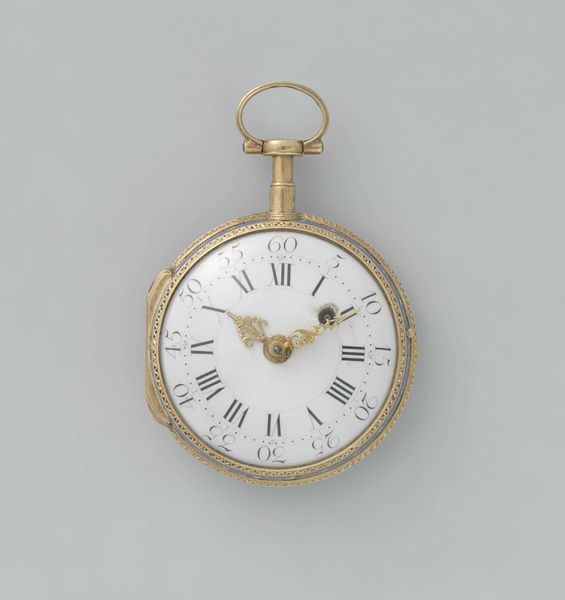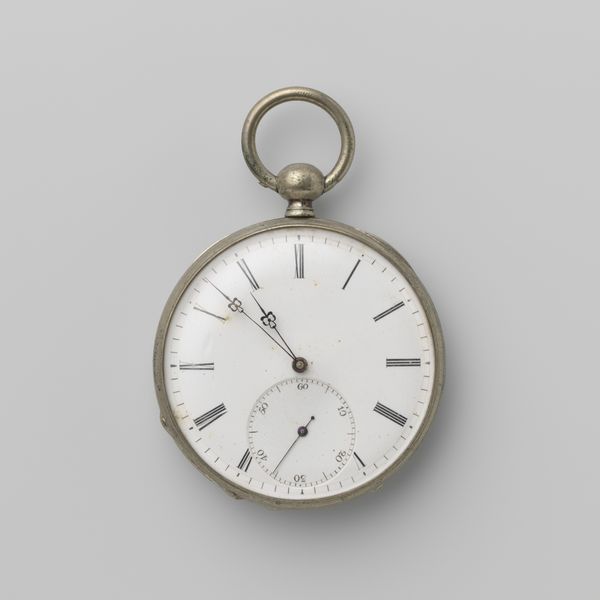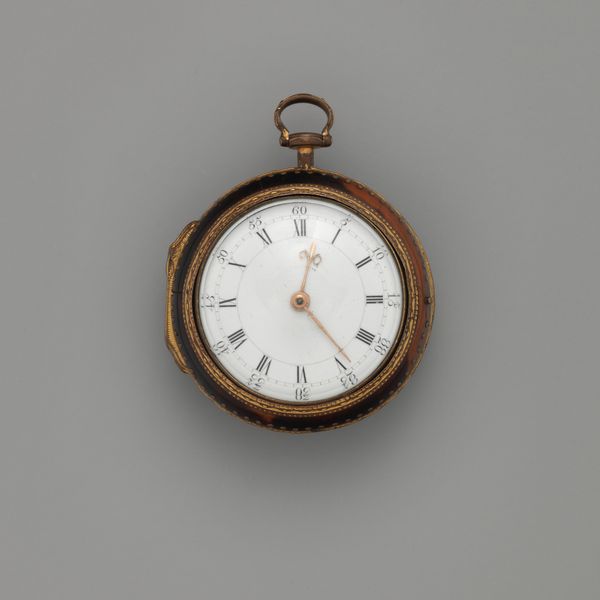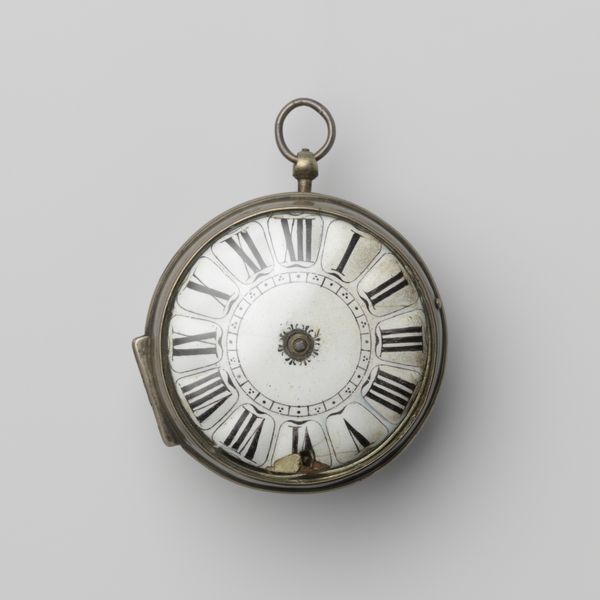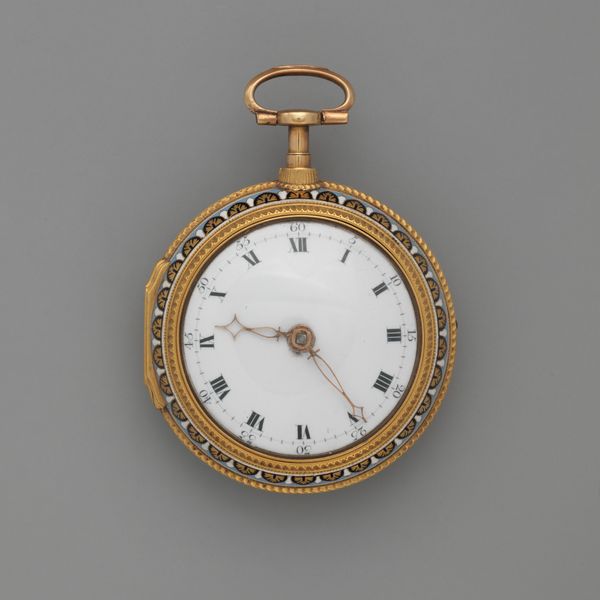
#
portrait
#
neoclacissism
#
decorative-art
Dimensions: diameter 5.5 cm, height 7.1 cm, width 5.5 cm, depth 2.2 cm
Copyright: Rijks Museum: Open Domain
Editor: This object, titled "Horloge", is a pocket watch that was created sometime between 1800 and 1900. I don't know exactly what it's made of, perhaps silver and enamel? It feels very precise, almost scientific, in its design, while also being precious. What jumps out at you when you see this piece? Curator: Immediately, I see more than just the measurement of time. Look closely; above the main dial, aren't there smaller dials indicating "Jours" and "Mois"? Days and Months. This isn't just telling you the hour; it’s locating you within larger cycles. Editor: That's interesting! It's like the watch isn't just about the present, but how the present relates to days and years? Curator: Exactly. Think about the Neoclassical period it was made in, its interest in order and reason, its attempt to control things like time. Before, time might have been dictated by the sun or church bells. What does it mean when you have a miniature sun dial, of sorts, in your pocket? Editor: So, it is less about punctuality and more about a feeling of control. The symbolic meaning then changes the entire intention of the watch? Curator: Precisely. It transforms from a mere tool into a symbol of human reason asserting its dominance over the natural order. We carry cultural narratives, quite literally, in our pockets. And notice that pristine face, carefully preserved; a memory, constantly being reactivated each time it is displayed or held. What an object, and what stories it can tell. Editor: That gives me a whole new appreciation for what seems at first just a simple object. The symbolic charge hidden within the familiar! Curator: Indeed; everyday items, read with an iconographic eye, reveal just how rich our material world is.
Comments
No comments
Be the first to comment and join the conversation on the ultimate creative platform.

